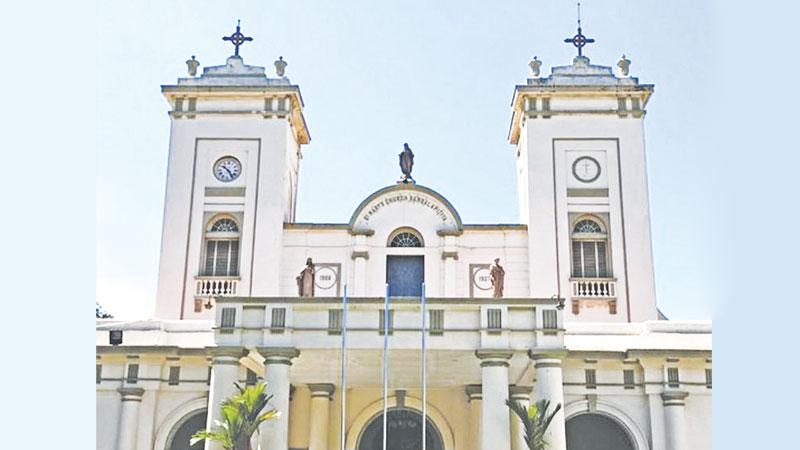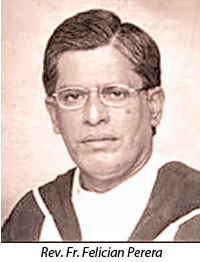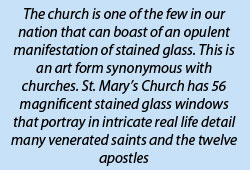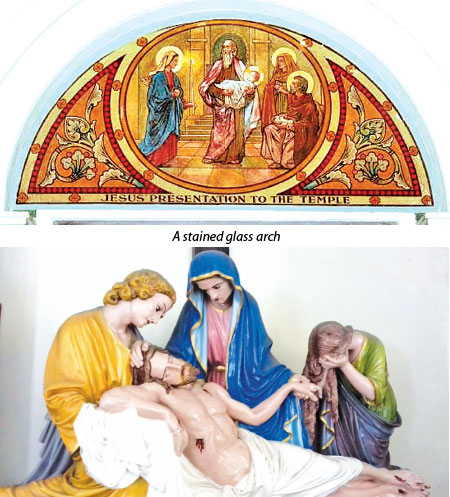
One of the iconic landmarks of Bambalapitiya is the church dedicated to Blessed Mary. For over 100 years she has been a spiritual beacon to generations of Catholics. She has influenced the setting up of three schools and nurtured many aspiring seminarians to rise as prudent clergy. Her gracious legend continues to this day under the tutelage of Rev. Fr. Felician Perera, the parish priest.
 Christianity has been practised in Sri Lanka since 1505 when the Portuguese arrived here. In those early years it is recorded in the temporal and spiritual conquest of Ceylon that the zealous Franciscan Friars built 55 small churches from the banks of the Maha Oya to the Walawe ganga (river).
Christianity has been practised in Sri Lanka since 1505 when the Portuguese arrived here. In those early years it is recorded in the temporal and spiritual conquest of Ceylon that the zealous Franciscan Friars built 55 small churches from the banks of the Maha Oya to the Walawe ganga (river).
 These priests came to the island in 1543 and were followed by the Jesuits in 1602 and later by the Dominicans in 1605. By December 1834, Pope Gregory had declared Ceylon as a separate ecclesiastical territory as the Apostolic Vicariate of Ceylon. Initially, the parish of Bambalapitiya was a substation under the church of Saint Philip Neri, Pettah. This church was responsible for the Pettah, Slave Island, Kollupitiya and Bambalapitiya churches. It was only in 1886 that Bambalapitiya was instituted as an independent parish with Rev. Fr. Louis Coquil OMI becoming the first parish priest.
These priests came to the island in 1543 and were followed by the Jesuits in 1602 and later by the Dominicans in 1605. By December 1834, Pope Gregory had declared Ceylon as a separate ecclesiastical territory as the Apostolic Vicariate of Ceylon. Initially, the parish of Bambalapitiya was a substation under the church of Saint Philip Neri, Pettah. This church was responsible for the Pettah, Slave Island, Kollupitiya and Bambalapitiya churches. It was only in 1886 that Bambalapitiya was instituted as an independent parish with Rev. Fr. Louis Coquil OMI becoming the first parish priest.
During this time the first seminary was set up at Kotahena. As the students increased, St. Bernard’s Seminary was relocated to Bambalapitiya. It is believed that this building stood where the present flats are built. Thus due to its close proximity to the church, Rev. Fr. Louis was also appointed as the first Superior of the Seminary.
Distinguished seminarians who studied here were Cardinal Thomas Cooray, Bishop Emilianus Pillai and Bishop Edmund Pieris. The name of a French priest stands out at St. Mary’s Church, that of Rev. Fr. Henry Lefrer, OMI. He was a young man in the Oblate Seminary of France and showed a great passion to serve as a missionary. He was subsequently sent to Ceylon in February 1886 where he took his final vows.
The Oblate missionaries made a great impact on the local ministry and in gratitude their crest is embossed on the left bell tower of the church. In 1887 Rev. Fr. Charles Fonseka became the first Ceylonese to become the parish priest. The early parish priests took great pains to make St. Mary’s a cohesive parish community. By 1901 Rev. Fr. Francois Euze, OMI assumed duties at the parish.
He served the church with renewed zeal for 11 years. It was during his tenure that he aspired to build a new church. The cornerstone for the new edifice was laid on July 12, 1908 by then Archbishop Anthony Coudert. The centenary of the church begins from this date. The church was completed in 1917 and by 1927 the façade was added.
Students and allied troops
The church wielded its caring influence on the community. The parishioners soon requested a school for Catholic students. This paved the way for St. Mary’s School which started with 12 students in 1905. Later, Rev. Fr. Yves Gueguen built the present school in 1933. The parish was instrumental in establishing Holy Family Convent.
This leading girls’ school first started at Clock House, Laurie’s Road in 1903. Then they shifted to Manix Rhue on Galle Road, and later to Choice Villa on Clifford Road and again to Park House down Melbourne Avenue. Finally, in 1908 the school was built and established at its present location, Retreat Road. It is recorded that the Bambalapitiya parish was the driving force behind another great boys’ school - St.Peter’s College.
 The year1942 was one of uncertain change as the perils of the World War reached the tranquil island of Ceylon. Many people vacated their homes and went to live in areas away from the main city. Allied soldiers and sailors were deployed to Colombo. Soon the Colombo 4 area was full of British and Australian soldiers.
The year1942 was one of uncertain change as the perils of the World War reached the tranquil island of Ceylon. Many people vacated their homes and went to live in areas away from the main city. Allied soldiers and sailors were deployed to Colombo. Soon the Colombo 4 area was full of British and Australian soldiers.
These troops began attending Holy Mass at St. Mary’s Church. Rev. Fr. Reymann and Rev. Fr. Edwin Fernando realized that these men needed a clean place to eat. Putting the gospel into action these prudent clergymen began a canteen at the church premises, serving bacon, eggs, butter, jam and coffee at a reasonable price. Ladies form the church volunteered as cooks. Men from the parish did the purchasing. Soon the parishioners and soldiers formed close bonds.
This parish played a key role in beginning the church at Thimbirigasyaya, which is today known as St. Theresa’s Church (an article on this church was published in this newspaper on an earlier date). In April 1942 Fr. Reymann built a small shed and began prayers with around 50 people. Later the building of the church commenced.

Aquinas Hall the Catholic hostel for university students located first at Havelock Road was administered by the Bambalapitiya parish.
As Father Felician Perera and I walked along the aisle he explained, “You can see the stained glass. It was got down during the time of Rev. Fr. Yves Gueguen. This enriches the beauty of this church.”
Divine art and sculpture
The church is one of the few in our nation that can boast of an opulent manifestation of stained glass.
This is an art form synonymous with churches. St. Mary’s Church has 56 magnificent stained glass windows that portray in intricate real life detail many venerated saints and the twelve apostles. Some of the popular saints depicted are Cecilia, Joan of Arc, Patrick, Bridget, Damian, John Bosco, Francis Xavier, Ignatius, Augustine, Lawrence and Thomas Aquinas.
The bold colours resonating with the radiant rays of sunlight are indeed an inspiring sight. The art is further augmented with 18 large statues and the Stations of the Cross. The sanctum is further enriched with 12 murals which depict scenes from the Holy Bible. In 1980, Rev. Fr. Claver Perera built a replica of the Lourdes grotto on the site of the old tennis court. St. Mary’s Church has a mixture of architectural styles. The main influence seems to reflect Portuguese Baroque, the inside neoclassical and the façade infused with Palladian features.
The roof is dominated by an octagonal dome. Behind the main altar another large stained glass window is visible. This shows Mary and the Christ child. It was made in France and installed in 1920. Underneath are written the words, ‘Ave Maria Virgo Mater Domina (Hail Mary virgin mother of God). The solid marble altar has a reflection of the Last Supper.
The church has two sets of bells, all cast in France. The largest bell weighing 2,500 pounds is named Sebastian and the other three bells are named Mary Lois, Grace Josephine and Therese. Another stunning feature is the 12-foot wooden almirah where the sacred vessels are kept.
The church choir has many accomplished singers. The church devotedly engages in many forms of ministry and sustains the love of God.
